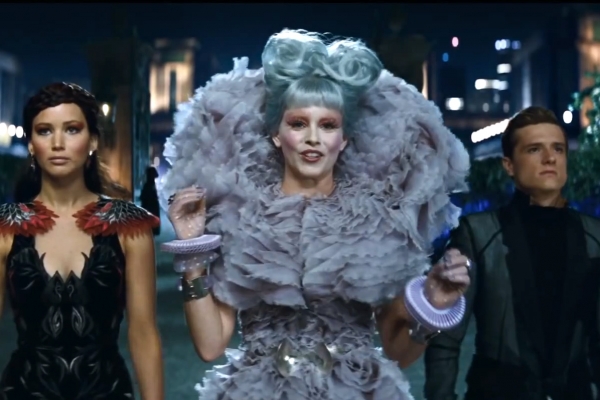THE UPPER FOOTAGE
 Thursday, November 28, 2013 at 12:43PM
Thursday, November 28, 2013 at 12:43PM Director: Justin Cole
Rating: 3.5/5

The oldest rule of comedy is ‘If they buy the set-up, they buy the gag’ and it is sage advice to those seeking maximum thrills from the found footage shocker, The Upper Footage. Debutant director Justin Cole and fellow first-timer, producer Tiffany Baxter, are proving old-school savvy in their handling of all aspects of their first roll of the dice, most notably in the intricate construction of the narratives mythology and a determined line in ‘real-or-fake’ conjecture.
Set on one fateful night amidst the douche-baggery of NYC’s spoilt teen culture where the only thing that is cheap is a young woman’s life, three young men and a pretty blonde cruise the streets in a limo, doing coke, boozing and blustering in the most obnoxious of ways (c**t, f****t and n****r are all screamed at various points throughout the film); the entire evening is being captured on a single camera by one of the lads. A sojourn into a downtown nightclub leads to a pick-up, the sweet party girl Jackie, her lower social status a constant source of amusement to the rich brats.
Coercing her back to a penthouse apartment, the group get deeper into a cocaine-and-alcohol binge until Jackie can take no more and heads for the bathroom, the cruel taunts of the group behind her. Things turn horribly dark when Jackie is found dead and the tenuous link between friends, the potential of their future lives and the moral responsibility of respecting the departed stranger above themselves all collide.
Having convincingly manipulated media outlets since the projects inception, it has been revealed that Cole and Baxter entirely staged the footage. That’s no surprise, as there are several elements of the found-footage premise that don’t really hold up (not least of which is the fact that the action takes place from dusk ‘til dawn without a single ‘battery charge’ warning). Despite the best efforts of the production, The Upper Footage never quite overcomes the question that casts a shadow over many f-f efforts, namely ‘Why is anyone filming this?’.
The film also frustratingly shifts its own moral compass. When the director fades to black instead of showing the boys take sexual advantage of the catatonic Jackie, a title card states the scenes have been deleted out of respect to her family. How those family members might react to footage of their late relative guzzling booze, doing blow and face down and dead in a toilet bowl must have been harder for the production to gauge…
But Cole’s accomplishment of rendering his film in the most realistic of milieus should not be undervalued. He proves particularly adept at extending scenes beyond any traditional notion of narrative guidelines or conventional production elements (lighting, editing, sound, etc). As the penthouse descends into panic following Jackie’s passing, Cole boldly captures the mayhem from a distance as the camera lays on the bathroom floor, the entire frame filled for what seems an eternity by the dead girl’s hair.
Justin Cole has acknowledged that his inspiration for both the filming style and groundbreaking marketing campaign was the grandfather of all found-footage pics, 1999’s The Blair Witch Project, and he and Baxter have honoured that film’s legacy with aplomb. It is a shame that his film’s secret escaped before Cole and Baxter had milked it for all its inherent value. Despite being an aggressively hard-to watch film at times (the characters alone may be the most singularly unpleasant human beings on-screen this year), The Upper Footage is a strong vision of personalised horror, a modern take on morality amongst the privileged and a textbook case of inventive genre marketing.
Footnote: In correspondence with director Justin Cole, he offered insight into one element raised in the review: "You made a comment about how the battery alert would pop on screen. For that camera when battery is low it shows up on the viewfinder but not the actual footage. We shot every night with 2 batteries and always had time left over."









